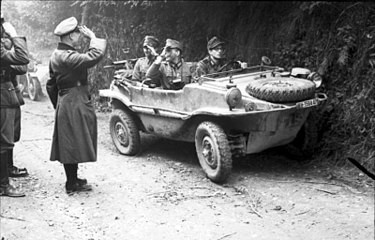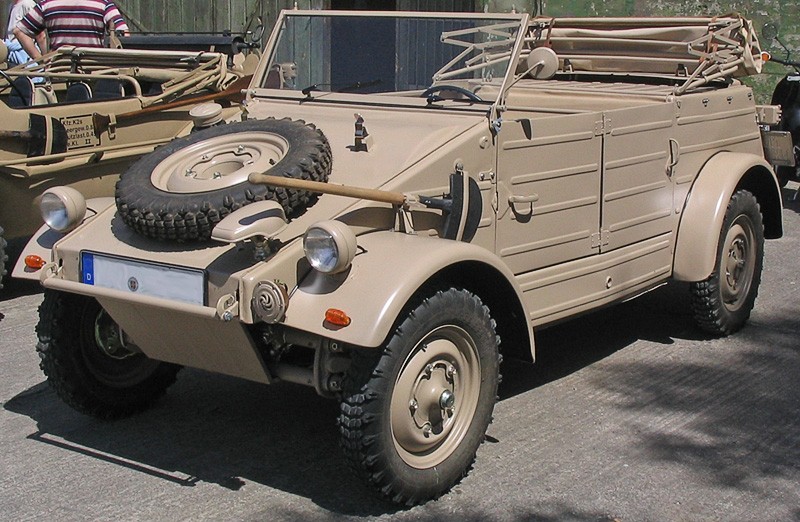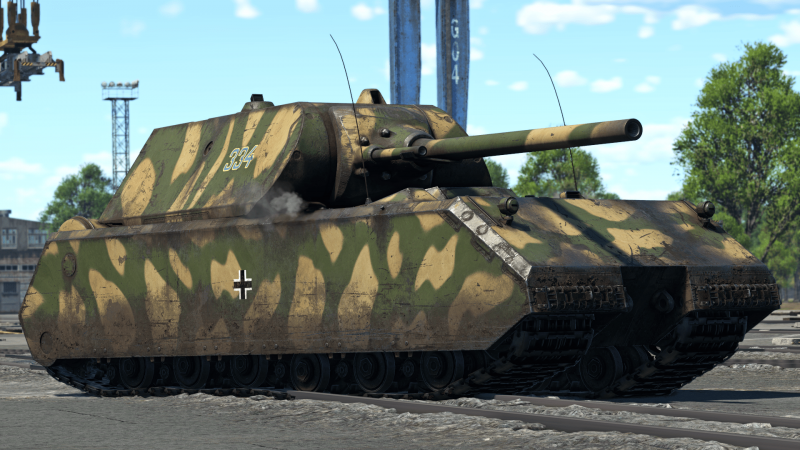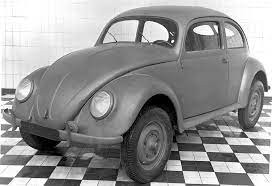The Third Reich had a number of top managers, who linked their ideals to the crimes of the same Third Reich. Albert Speer (armament), Wernher von Braun (rocket scientist), Alfred Jodl (general), Alfried Krupp von Bohlen und Halbach (the arms manufacturer), Hjalmar Schacht (the banker) and Ferdinand Porsche (the technician). They were men with a big ego who kept an ultimate life goal. That there were many deaths among prisoners from the concentration camps who were employed to realize their goal without any form of compassion, was not of any interest to them The expression “Ich habe es nicht gewusst” certainly applies here.

Ferdinand Porsche was born on 3 September 1875 in the current Vratislavice nad Nisou in the Czech Republic (then Maffersdorf) and was the third child of Anna and Anton Porsche. His father owned a plumbing company, but Ferdinand was not very fascinated by metal forging, more by mechanics. His parents assumed that Ferdinand would once take over the plumbing company, because brother Anton, who would actually succeed his father, had died in an accident. So father and son’s plans did not match. Electricity was his passion, but Father Porsche thought all that stuff was just hocus pocus. The management of textile factory Ginzkey, which Ferdinand often helped with, also noticed that Ferdinand was very handy with electricity and convinced father Porsche. Ferdinand studied at the Vereinigte Elektrizitäts Ag in Vienna. The son of the leadership of VE AG was also a pioneer in the field of electricity and so Ferdinand was given plenty of opportunity to experiment. His work was limited to cleaning and lubricating machines during the day. In the evenings he went to the Technical University to college. He wasn’t enlisted, but no one was bothered by the illegal student. In 1898, VE AG was commissioned by Lohner to supply an electric motor for an automobile. Ferdinand Porsche was enthusiastic and worked on electric motor for months. Lohner was so excited about the result, that he offered Ferdinand a job. He did not hesitate and left for Hof-wagen- und Automobilfabrik Lohner.
In the year 1900, it was not a done deal that the future cars would run on fossil fuels. In addition to the ideas of Nikolaus Otto or Rudolf Diesel, many, including Ferdinand Porsche, are betting on the electric car. But due to the heavy batteries, the range was only very limited. The petrol engines also had their problems. The petrol was only available at the pharmacy and full refueling was only allowed in daylight. Ferdinand saw the same advantage in both solutions and so the Mixte, a petrol car that had an electric ignition, lighting and starter, was created. The car was a great success and Porsche was allowed to transport Archduke Franz Ferdinand with the Mixte to his troop inspections. Ferdinand Porsche has worked for several car companies where he worked on the products of Lohner-Porsche, Egger-Lohner, Austro-Daimler, NSU, Zündapp and Daimler-Benz. Then he founded his own design studio. Because of his merits in the automotive industry, he received an honorary doctorate from the Technische Hochschule Wien and the officer’s cross in the French Joseph order in 1917. In 1924, the Technische Hochschule Stuttgart awarded him the title of doctor of engineer honoris causa.

After the First World War, Germany had 86 automobile factories, which together marketed 144 models. There was only one problem; there were no customers who could afford this expensive hobby. Porsche recognized the problem and, together with Hungarian engineer Josef Ganz, laid the foundations for the dream he cherished all his life: to manufacture a cheap simple car that could afford a large part of the population. In December 1930, the Porsche GmbH Konstruktionen und Beratungen für Motoren und Fahrzeugbau in Stuttgart was ready for the start, together with Adolf Rosenberger, driver and merchant. Rosenberger was the financial man who also conducted the negotiations, Porsche was engaged in the engineering. After three years of cooperation, Rosenberger had to emigrate to the US in 1935 to escape the Nazis. Porsche decided to work with the Nazis. Strangely enough, the Soviet union was its first (possible) big customer. After a number of visits, Porsche was enthusiastic about the possibilities the country could offer him. The function of general representative for the motorization of the Soviet Union was offered to him. There was only one but, Porsche had to promise to stay in the Soviet Union for a lifetime. After a long time of deliberation, Porsche decided not to accept the offer. Not for political reasons, but because of the fact that he felt too old to start in a foreign country whose language he also did not master. Until 1933, it was pure survival for Porsche. There were many small assignments, but the money of the lenders was soon spended.
In 1933, racing driver Hans Stuck was invited to Adolf Hitler to speak about the problematic car industry. Hitler promised Stuck, saying “be patient, if I’m in power soon I’ll help you,” to do something about it. In Hitler’s seizure of power, a real auto fanatic came on board. Hitler loved everything that had to do with automotive technology. During the Automobilausstellung in Berlin, Hitler promised to help the car industry. This message sounded like music to Porsche and he sent Hitler a telegram to show his respect towards the Führer. Hitler was a potential moneyman for him. However, Porsche was not the only one, also Jakob Werlin of Daimler was a candidate. Hitler finally decided to make 500,000 Reichsmark available to Werlin and 300,000 Reichsmark to Porsche. After a few racing successes, Porsche put its dream on paper: producing “den Bau eines deutschen Volkswagen” and sent it to the Reichswehrministirium in 1934. With a price of 1550 Reichsmark, the car had to be affordable for a wide buyer audience. Hitler glorified Porsche’s plan. With the requirement that the car also had to be suitable for military purposes.
April 1933 the plan became more concrete. Hitler, Werlin and Porsche came together to further discuss the plans of the construction of the Volkswagen. A car for four people, an air-cooled diesel engine, all-wheel drive especially for the Wehrmacht. A major problem was the price proposed by Hitler: the car could not cost more than 1000 Reichsmarken. Porsche and Werlin found the latter a utopia. Porsche, who was the only one who believed in the project, got to work. It took four years for the design phase to be completed. In the end, 1.75 million Reichsmark was invested in the project. Hitler loved bigger, more and better as Albert Speer could take up the building of the Reichshauptstadt Germania, Porsche did the project of the motorization of the German people, because Hitler wanted it. In July 1936, Hitler was updated on the Obersalzberg in the details of the design. It was a great success. There had to be one factory for the production of millions of Volkswagens. In nine months, the factory would be ready. And a year later, 300,000 cars would be produced. In 1937, thirty test cars were delivered and made available to Reichsführer-SS Heinrich Himmler. The SS covered a total of 1.5 million kilometres. The result was satisfactory, Porsche released the car for production.

To produce the large numbers, Porsche traveled to the US for an appointment with Henry Ford. Porsche took a lot of inspiration back to Germany. On February 24, 1938, the construction of a huge factory in Fallersleben on the Mitelland Canal was started. The exitement only lasted a short time. Within two months, most workers moved to the construction of the Westwall. The work just started threatened to fall silent. One solution appeared to be the pick-up of 2400 workers from Italy where unemployment had risen enormously. For the most part, they took on the work on the Volkswagen factory. Their accommodation was no more than a few paltry barracks with an abominable standard of living. Adjacent to the factory, according to a new kind of modern nationalist residence, a place had to arise where 30,000 workers could live and work with their families, with spacious modern houses, roads, cinema, theater and bookstore. For now, it was still a soggy, fallow land. The cost of construction was financed by a “savings campaign for the people”. Under the motto “pay now, drive later”, 280 million Reichsmark was raised. The Volkswagen was never delivered. The cars that were produced were military versions of the Volkswagen (Schwimmwagen and Kubelwagen) and 630 limousines for the transport of the Nazi leaders. With the gathering of Poland on September 1, civilian production of the Volkswagen came to an end. Herman Göring wanted to build the JU 88 in the factory, but withdrew this plan. The giant Volkswagen factory would only win small orders in the coming years.

However, Porsche still got along well with Hitler and became an advisor for the production of armoured vehicles. As a counterpart to the Russian T-34, the design had to be heavy and indestructible. Porsche’s design was far too complicated and Porsche had failed (see paragraph about the Tiger below). The Porsche design could still be developed into a Panzerjäger, the “Ferdinand” (later Elefant) and was used in the war at Kursk and it became a fiasco, almost all vehicles fell out. Initially, the Elefant was equipped with two 15 ltr. Porsche air-cooled V10 engines, but due to cooling problems, these engines were replaced by two Maybach HLM engines.
50 Vehicles that could be rescued from the battlefield were returned to the factory and modified. 11 Vehicles were sent to Anzio in Italy after the renovation, the other 37 were deployed at Tarnopol in the Ukraine.
Hitler then signed again for a further development, the “Maus“ of which three were delivered. 188 Ton heavy, 20 cm thick armour, a 150 mm cannon, an engine of 1200 hp and a fuel consumption of 3800 liters at 100 km. In times of a major fuel shortage a foolish idea. At the end of 1943, Porsche was no longer president.
The Tiger.

During Operation Barbarossa it became clear that the Russians could dispose of the T-34 tank, which surpassed the German tanks in armour and firepower. Porsche and Henschel were given the assignment. Due to the rush, it was not possible to fully develop and compare both designs. Eventually, a Henschel chassis (4501H) was chosen with the 700 hp Maybach engine and a Porsche tower. The Porsche design (4501P) was very advanced, but proved too complex and unreliable. It was decided to equip the dome designed by Porsche with an 88 mm-Flak cannon, the only existing cannon, produced by Krupp, which seemed sufficiently effective against the new Soviet tanks. The ultimately most famous tank from WW2 was thus a forced merger of various available elements. A new longer 88mm cannon would later be placed in the Tiger II. 1347 Tiger I and 489 Tiger II tanks were produced. The Tiger was much more expensive in production. For each Tiger, two or three Panthers could be produced. The Tiger was deployed in the Soviet Union in August 1942, without too much success, because the tank was still in development phase. In the following years, the Tiger turned out to be a deadly weapon. The Tiger managed to take out many dozens of enemy tanks. Most Tigers were lost due to mechanical failure and fuel shortage, then through airstrikes and lastly by enemy tanks. Still, the Tiger’s production can be seen as a strategic error. A significant part of the production capacity was seized for better quality tanks, while the biggest problem was the quantitative backlog on the Allies.

Despite the fact that the design of his chassis for a heavy tank was rejected, there was a breakthrough for Porsche. In the icy conditions in Russia, most water-cooled vehicles refused service. Porsche with its air-cooled Kubelwagen had to deliver 4000 vehicles monthly from July 1942, numbers that were not met because they had largely already switched to the production of aircraft parts. Porsche wanted to take over the French Peugeot factory, but a short time later the factory was destroyed by a British bomb attack. In 1944 there was another revival, the Volkswagen factory started to build the “Vergeltungswaffe“ V1. The V1 was the cause of Volkswagen becoming deeply caught up in the crimes of the Nazis. Of the plan for realizing the most beautiful and modern working-class city, there was little more left than a camp complex for prisoners of war and concentration camp where fear and deprivation were the order of the day. The forced labourers in the Volkswagen factory were not given enough to eat, were beaten and locked up at the slightest offense. The workers had all kinds of diseases and were unable to work. Porsche presented the photos taken by the company doctor to Hitler. Hitler became angry and promised Porsche to do something about the conditions. Porsche was later praised for his efforts to improve the situation. Whether the fate of the workers really came to his heart has never become clear. The amount of food improved, but the other conditions remained appalling and in 1943 the misery was so great that, in order to continue receiving the bread rations, the corpses of the deceased workers were kept hidden for as long as possible. An even more dramatic treatment was the children. In 1943, the Volkswagen factory’s management opened a children’s home. The forced labourers were not allowed to keep the babies themselves and had to be admitted to the children’s home. The home was soon crowded and several times a day, child corpses were buried in the cemetery of Rühen. In the end, almost none of the children survived the home. The mothers had to pay 20 Reichsmark of their poor wages for the “burial” of their child. Porsche was informed about the situation in the children’s home, but nothing is known about a Porsche initiative with regard to the children.

An idea of Porsche to set up an aluminum factory on the premises of the Volkswagen factory was discovered by Albert Speer (Reichsminister für Bewaffnung und Munition) and immediately called off. 500 prisoners of war from Neuengamme had already started to build the factory but were transported to Sachsenhausen again. Detail: Before getting the 500 prisoners of war, Porsche had promised Himmler to supply 4000 cars to the Waffen-SS with priority. In March 1944, Porsche launched a new initiative, building an underground factory for the construction of a secret weapon, requiring 3500 labor. After a request to Himmler, those responsible for the factory were able to select the “specialists” from the concentration camps. Himmler elevated Porsche to the rank of SS- Oberführer and handed him the Totenkopf award. Due to the active requests for more concentration camp prisoners and the associated degrading conditions, Porsche became partly responsible for the atrocities of the regime.
Ferdinand Porsche left the Volkswagen factory in January 1945. To the end, he seems to have believed in the final victory. As his son Ferry later pointed out, “he didn’t notice that Germany had lost the war until it was finally clear”.

The British occupied the factory in May 1945. At least, what was left of that. British Major Ivan Hirst was heavily charmed by the KDF-Wagen. The British military administration reacted quickly and ordered huge numbers. In October 1946, the ten thousandth beetle was in the production hall.
Porsche was told on his 70th birthday that he would not be prosecuted for war crimes. Yet Porsche was secured in the Black Forest in France. Reason, an opaque game between French industrialists who wanted to set up a production like the Volkswagen or avoid it. In 1947, the children of Porsche managed to get their father released against payment of a deposit.
Ferdinand Porsche died on January 30, 1951. Just before that in 1950, on a visit by Alfred Porsche, a beetle was produced every two minutes in the modern factory in Wolfsburg, two months after that the 200,000 e beetle was born.
Source:
Hitler’s Managers – Guido Knopp
Wikipedia